Welcome to Mon Tatane Tour and to your page dedicated to: “London travel guide” 😃. I’m Sarah, or Miss Tatane, passionate about cruises and travel, and I’ll guide you in your research.😃
London travel guide – Must-see places

Westminster Abbey
London travel guide
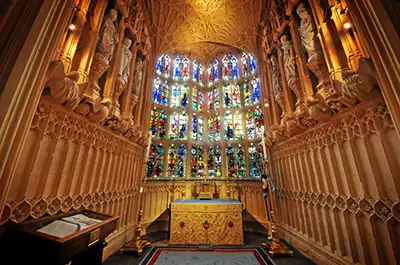

Westminster Abbey is a must-see for any visit to London, offering a unique historical, cultural and spiritual wealth in the heart of the British capital.
History and significance
- Foundation. Founded in the 10th century, it has been a place of Christian worship for over a thousand years. It is one of the most important religious buildings in London and the United Kingdom.
- Coronation place. Since William the Conqueror in 1066, the abbey has been the site of the coronations of almost every British monarch, as well as many royal weddings and funerals.
On-site experience
- Religious services. Attend a religious service to experience the abbey in all its spiritual splendor, with choral singing and traditional rituals.
Highlights not to be missed
- Tomb of the Unknown Soldier. Located at the entrance to the abbey, this tomb honors British soldiers who died in battle.
- Coronation throne. Admire the throne used during royal coronations, a symbol of the United Kingdom’s monarchical history.
- Cloisters and gardens. Explore the tranquil cloisters and manicured gardens, offering a quiet moment in the heart of London.
Useful information
- Access. Located in the Westminster district, the abbey is easily accessible by tube (Westminster and St. James’s Park stations), bus and on foot from many central attractions.
- Tickets. Reservation and price!
Big Ben
The iconic clock of London


History and significance
- Inauguration. The clock tower, often called Big Ben, was opened in 1859. Although “Big Ben” technically refers to the 13.5-ton bell located inside the tower, the name is commonly used to designate the entire structure.
- Iconic place. Located to the north of the Palace of Westminster, Big Ben is one of the most recognizable symbols of London and the United Kingdom, representing British parliamentary democracy.
Features
- The bell. Big Ben, the clock bell, weighs approximately 13.5 tonnes and measures over 2 meters high and 2.7 meters in diameter. Its resounding chime is recognized around the world.
- The clock. The four clock faces each measure 7 meters in diameter. The minute hands measure almost 4.3 meters, and the hour hands, 2.7 meters. The clock is renowned for its precision.
- The Elizabeth Tower. The tower structure, renamed Elizabeth Tower in 2012 in honor of Queen Elizabeth II’s Diamond Jubilee, stands 96 meters high.
Useful information
- Access. Big Ben is easily accessible by metro (Westminster station) and various public buses. It is located in the heart of London, close to many other major attractions like Westminster Abbey and the London Eye.
Why visit Big Ben?
- Iconic symbol. Big Ben is a symbol of British identity and parliamentary democracy, a must-see for any visit to London.
- Engineering masterpiece. Admire the ingenuity and precision of the clock, which has continued to operate with remarkable accuracy for over a century.
- Historic place. Immerse yourself in the UK’s rich history by visiting one of its most iconic landmarks and exploring the historic surroundings.
The Tower Bridge
London travel guide


Tower Bridge is much more than just a bridge; it is a marvel of engineering and a testament to London’s history and culture. Make sure to include it in your itinerary when visiting London.
History and significance
- Construction. Tower Bridge was built between 1886 and 1894. It was designed to provide both pedestrian and road passage while allowing ships to pass by raising its drawbridges.
- London icon. This bridge is one of London’s most iconic symbols, often confused with London Bridge, and is recognized for its unique architecture and spectacular views.
Features
- Drawbridges. Tower Bridge has two drawbridges that raise to allow ships to pass. Each lift is an impressive spectacle and occurs approximately 1,000 times per year.
- Neo-Gothic towers. The bridge’s two towers are built in a neo-Gothic style, giving it a majestic and historic appearance. The towers also house a museum that tells the history of the bridge.
- Glass walkway. A glass walkway connects the two towers 42 meters above the River Thames, offering breathtaking views of the river and the city. It is a unique experience for those who are not afraid of heights.
Useful information
- Access. Tower Bridge is easily accessible by underground (Tower Hill or London Bridge stations) and various public buses. It is located near the Tower of London, another major attraction.
Why visit Tower Bridge?
- Iconic symbol. Tower Bridge is a symbol of Victorian ingenuity and architecture, a must-see stop for any visitor to London.
- Panoramic view. Enjoy spectacular views of the River Thames and surrounding monuments from the glass walkways.
- History and ingenuity. Discover the fascinating history of the bridge’s construction and its impressive mechanical workings through the Bridge Museum.
- Reservation for a guided tour of the 30 most beautiful monuments including the Tower Bridge.
London Eye
London travel guide


The London Eye, also known as the Millennium Wheel, was inaugurated on 31 December 1999 and opened to the public in March 2000. Designed to celebrate the new millennium, it quickly became one of London’s most popular attractions.
- Modern symbol. At 135 meters high, the London Eye was the world’s largest observation wheel until 2006. It is a modern symbol of London, offering spectacular panoramic views of the city.
Features
- Capsules. The London Eye has 32 glass capsules, each accommodating up to 25 people. These capsules offer a 360-degree view of London, allowing you to see iconic monuments such as Big Ben, St. Paul’s Cathedral and Buckingham Palace.
- Complete tour. A full rotation of the London Eye takes around 30 minutes, giving visitors plenty of time to admire the views and take photos. The slow speed allows for a pleasant, dizzy-free experience.
- Lighting. The London Eye is often lit up in different colors at night, adding a touch of magic to London’s nighttime landscape and marking special events or celebrations.
Useful information
- Access. Located on the south bank of the River Thames, near Waterloo tube station, the London Eye is easily accessible on foot, by bus or by tube. It is also close to other attractions like the London Aquarium and the Southbank Centre.
- Schedules. The London Eye is open daily from 10 a.m. to 8:30 p.m. It is advisable to book tickets in advance to avoid queues.
Why visit the London eye?
- Panoramic views. Enjoy unrivaled views of London from one of the city’s most iconic structures. On a clear day, it is possible to see up to 40 kilometers in all directions.
- Unique experience. The London Eye offers a unique visiting experience, combining the sensation of a ride on a giant wheel with discovering the city from a new perspective.
- Photography. It’s the perfect place to take memorable photos of the London skyline, whether during the day or at night when the city is lit up.
London Eye Combo Entrance Ticket
Buckingham Palace
London travel guide

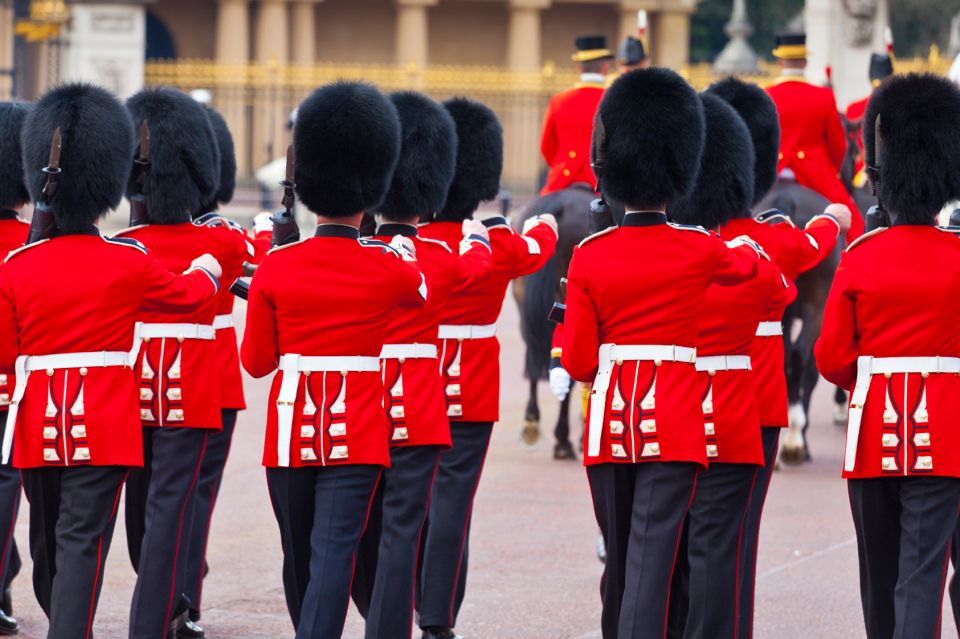

Built in 1703 for the Duke of Buckingham, Buckingham Palace was acquired by King George III in 1761 as a private residence for Queen Charlotte. It became the official residence of the British monarch during the reign of Queen Victoria in 1837.
- Royal residence. Today, Buckingham Palace is the official residence of the British monarchy in London. It is the site of many official events, state receptions, and royal celebrations.
Features
- State apartments. These sumptuously decorated rooms are used for official ceremonies and receptions. They are open to the public during the summer months, offering a rare insight into royal life.
- The changing of the guard. This emblematic ceremonial, which takes place at the front of the palace, attracts thousands of spectators. Guards in traditional uniforms march to the sound of military music in a colorful and impressive parade.
- Buckingham Gardens. The palace gardens cover approximately 16 hectares and include a lake, flower beds, and ancient trees. During summer visits, visitors can explore these magnificent gardens.
Useful information
- Access. Located in the heart of London, Buckingham Palace is easily accessible by tube (Victoria, Green Park and Hyde Park Corner stations) and various public buses. It is also within walking distance of many other attractions like St. James’s Park and the Palace of Westminster.
- Schedules. Open from July 21 to August 31 from 9:30 a.m. to 7:30 p.m. From September 1 to September 30 open from 9:15 a.m. to 6:30 p.m.
Westminster and the changing of the guard
Tower of London
London travel guide

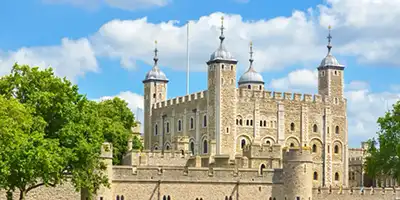
The Tower of London is home to the Crown Jewels, a dazzling collection of crowns, scepters and other royal objects used in official ceremonies. Among the most famous coins are the Scepter with the Cross and the Imperial State Crown
- The white tower. Built by William the Conqueror, the White Tower is the central keep of the tower. Today it contains an exhibition of historical weapons and armor, as well as the Saint-Jean chapel.
- The yeoman warders. Nicknamed the Beefeaters, these traditionally uniformed guards are responsible for the security of the tower and offer humorous and informative tours, sharing captivating stories about the tower’s past residents.
- The Crows. According to legend, the presence of ravens at the Tower of London is essential to the survival of the kingdom. You can observe these iconic birds in the tower, each with a unique name and personality.
Useful information
- Access. Located on the north bank of the River Thames, near Tower Bridge, the Tower of London is easily accessible by underground (Tower Hill station) and various public buses. It is also close to many other historic sites and attractions.
- Schedules. The Tower of London is open all year round
- March to October from 9:00 a.m. to 5:30 p.m. (weekends open at 10:00 a.m.)
- From November to February: Tuesday to Saturday: 9 a.m. to 4:30 p.m.
- Sundays and Mondays: from 10:00 a.m. to 4:30 p.m.
Why visit the Tower of London?
- Dive into history. Explore over 1,000 years of British history, from tales of betrayal and conspiracy to rich royal ceremonies.
- Priceless treasures. Admire the Crown Jewels, a collection of unique and valuable royal artifacts that symbolize the British monarchy.
- Architecture and legends. Discover the impressive medieval architecture of the White Tower, listen to the fascinating tales of the Yeoman Warders and learn about the tower’s legendary ravens.
Tower of London and Crown Jewels Exhibition Ticket
Hyde Park
London travel guide


Hyde Park was established in 1536 by King Henry VIII as a hunting ground. In 1637 it was opened to the public by King Charles I, becoming one of the first royal parks accessible to all.
- Royal Park. Today, Hyde Park is one of London’s most famous royal parks, covering 350 acres. It is a place of relaxation, leisure and cultural events for Londoners and visitors.
Features
- The serpentine lake. This 11-hectare artificial lake, created in 1730, offers water activities such as pedal boats and rowing. The lake shores are also ideal for picnics and peaceful walks.
- Speaker’s corner. Located on the northeast corner of the park, near Marble Arch, Speaker’s Corner is famous for being a free speech venue where anyone can speak on a variety of topics every Sunday morning.
- Kensington Gardens. Located west of Hyde Park, these magnificent royal gardens include Kensington Palace, manicured flower beds and notable sculptures like the Peter Pan statue.
- Monuments and memorials. The park is home to several monuments, including the Diana, Princess of Wales Memorial Fountain and the Holocaust Memorial, each providing a place for reflection and contemplation.
Useful information
- Access. Hyde Park is easily accessible by tube with several surrounding stations, including Hyde Park Corner, Marble Arch, Lancaster Gate, and Knightsbridge. It is also well served by public buses and is close to many of London’s central attractions.
- Schedules. The park is open daily from 5 a.m. to midnight, allowing visitors to enjoy the green spaces and facilities at any time of the day.
Why visit Hyde Park?
- Urban escape. Enjoy a vast and peaceful green space in the heart of London, ideal for relaxing, picnicking, or playing sports.
- Varied activities. Whether you enjoy water activities, jogging, cycling or just strolling, Hyde Park offers a wealth of activities for all ages and interests.
- Cultural events. Hyde Park regularly hosts outdoor events and concerts, adding a cultural and festive dimension to your visit.
- History and heritage. Explore significant historic sites and memorials, discovering fascinating aspects of British history and culture.
Piccadilly Circus
London travel guide


Piccadilly Circus was created in 1819 to connect Regent Street to Piccadilly. The name “Circus” comes from the Latin word meaning “circle,” although the location is now an intersection rather than a roundabout.
- Central London neon. Known for its bright advertising screens and neon signs, Piccadilly Circus is often compared to New York’s Times Square . It is an iconic London nightlife venue and a popular meeting point.
Features
- Advertising screens. Large LED screens light up Piccadilly Circus, broadcasting advertisements and messages from global brands. These lighted signs have been a distinctive feature since the 1900s.
- Statue of Eros. Officially known as the “Shaftesbury Memorial Fountain,” this aluminum statue, depicting Anteros, the Greek god of reciprocal love, is a famous landmark. Built in 1893, it is often wrongly called Eros.
- Theaters and entertainment. Piccadilly Circus is surrounded by historic theaters, including the Criterion Theatre, as well as cinemas and entertainment venues, making it a hub for culture lovers.
- Shops and restaurants. The intersection is lined with department stores, boutiques and renowned restaurants, offering a varied shopping and dining experience.
Useful information
- Access. Piccadilly Circus is easily accessible by tube, with Piccadilly Circus station located directly below the intersection, served by the Bakerloo and Piccadilly lines. Many public buses also serve the area.
- Schedules. Piccadilly Circus is an open-air public venue accessible 24 hours a day, although shops, restaurants and theaters have their own opening hours.
Why visit Piccadilly Circus?
- Lively atmosphere. Experience the vibrant and energetic atmosphere of one of London’s most famous intersections, where the twinkling lights and dynamic crowds create a unique ambiance.
- Iconic photography. Take iconic photos in front of the advertising screens and the Eros Statue, capturing the essence of modern London.
- Proximity to attractions. Piccadilly Circus is within walking distance of many other major attractions, such as Leicester Square, Trafalgar Square and Regent Street, making a full day of exploration easy.
- Cultural experience. Catch a play or performance at the surrounding theaters, or take advantage of the restaurants and shops for a rich cultural and culinary experience.
Oxford Street
London travel guide


Oxford Street has origins dating back to Roman times, where it served as the main road connecting London to the west of England. It became a lively shopping street from the 19th century.
- Iconic shopping street. Today, Oxford Street is one of the most famous shopping streets in the world, known for its department stores, fashion boutiques and Christmas lights.
Features
- Great stores. Oxford Street is home to some of London’s most iconic stores, such as Selfridges, Marks & Spencer, and John Lewis. These department stores offer a wide range of products from designer clothing to household items.
- Fashion boutiques. The street is lined with numerous fashion boutiques, from international brands like Zara, H&M, and Topshop, to luxury brands. Shopping enthusiasts will certainly find what they are looking for here.
- Christmas lights. During the festive season, Oxford Street is famous for its spectacular Christmas lights. Every year, thousands of festive lights and decorations transform the street into a real fairy tale.
- Restaurants and cafes. Between shopping sessions, relax in one of the many restaurants, cafes and pubs that dot Oxford Street, offering a variety of cuisines to suit all tastes.
Useful information
- Access. Oxford Street is easily accessible by tube, with several stations along the street including Marble Arch, Bond Street, Oxford Circus and Tottenham Court Road. It is also served by numerous public buses.
- Schedules. Oxford Street stores are generally open from 10am to 8pm Monday to Saturday, with reduced hours on Sundays. Opening hours may vary during sales periods and holidays.
Covent Garden
London travel guide


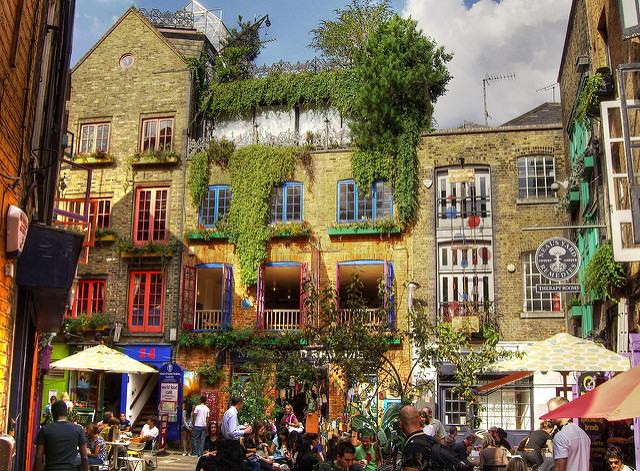
Covent Garden, located in the Westminster district of London, is famous for its historic market and picturesque streets. Initially a convent vegetable garden (hence its name), it has become a bustling commercial and cultural center.
- Historic market. Covent Garden Market dates back to the 17th century and was a popular fruit and vegetable market. Today it houses shops, craft stalls, restaurants and street performances.
Features
- Covent Garden Market. Explore the historic market halls full of unique shops, local crafts, artisan goods and London souvenirs. It is an ideal place to find original gifts and discover local crafts.
- Covent Garden Piazza. The Piazza is the heart of Covent Garden, surrounded by beer gardens, restaurants and bars. It’s a perfect place to relax, watch the street performers and enjoy the lively atmosphere.
- Street shows. Covent Garden is renowned for its varied street performances, including jugglers, musicians, mime artists and magicians. Street performances add a touch of magic and excitement to the Covent Garden experience.
- Theaters and culture. The area is home to several renowned theaters such as the Royal Opera House and the Theater Royal Drury Lane, offering a varied program from opera and ballet to musicals.
Useful information
- Access. Covent Garden is easily accessible by underground via Covent Garden station (Piccadilly Line) or Leicester Square (Northern Line and Piccadilly Line). It is also served by numerous public buses.
- Schedules. Shop and restaurant hours vary, but Covent Garden is generally bustling throughout the day and evening, especially on weekends when the street performers are at their peak.
Trafalgar Square
London travel guide
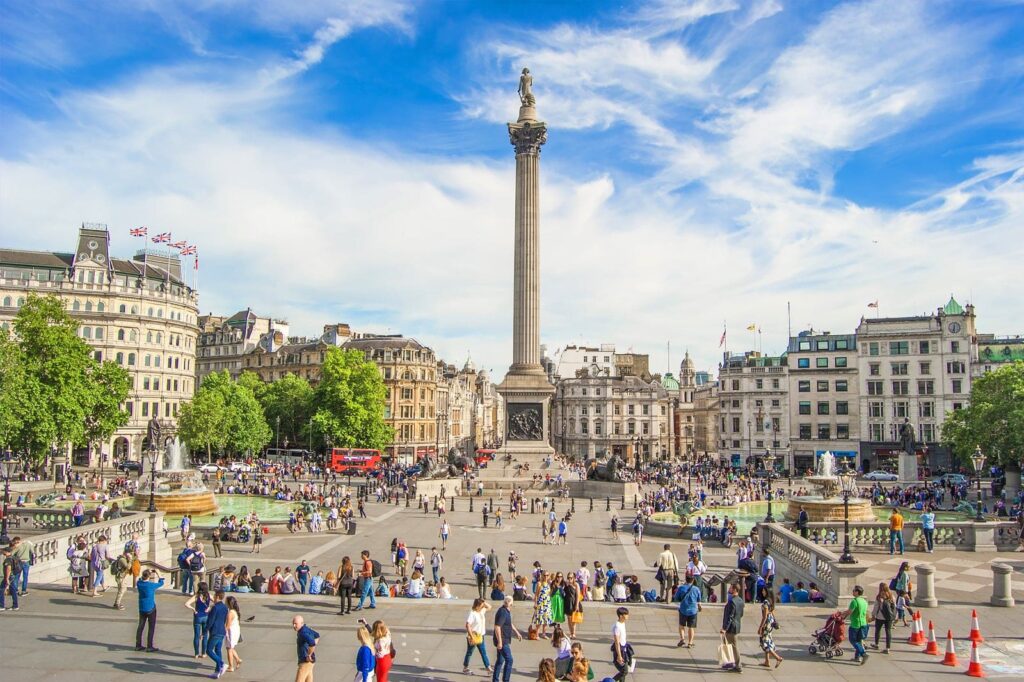

Trafalgar Square is one of London’s most famous and historic squares, located in the heart of the city in Westminster.
- Monuments and statues. The square is dominated by Nelson’s Column, erected in honor of Admiral Horatio Nelson, hero of the Battle of Trafalgar. Around the square you will also find statues of historical figures such as King George IV and General Charles James Napier.
Features
- Nelson’s Column. She is surrounded by four bronze lions. Known as the Lions of Trafalgar, adding a majestic touch to the place.
- The national gallery. At the northern end of Trafalgar Square is the National Gallery, one of London’s most important art museums. Founded in 1824, it houses an impressive collection of European paintings, ranging from the Middle Ages to the early 20th century.
- Fountains and open spaces. The square features fountains and open spaces that often host cultural events, political demonstrations and public celebrations. It is a central gathering place for Londoners and visitors from around the world.
Useful information
- Access. Trafalgar Square is easily accessible by tube via Charing Cross station (Bakerloo and Northern Lines) and Embankment station (District, Circle, Bakerloo and Northern Lines). Several bus lines also serve the area.
- Schedules. Open all year.
National Gallery
London travel guide



The National Gallery in London is one of the city’s leading art institutions, renowned for its impressive collection of European paintings. Founded in 1824, it is located on Trafalgar Square in the heart of London and welcomes visitors from all over the world to explore works of art from the Middle Ages to the early 20th century.
- Foundation. It opened in 1838, initially displaying a collection of 38 paintings.
- Location. Located on Trafalgar Square.
Collection highlights
- European paintings. The National Gallery houses an extensive collection of European paintings, including masterpieces by great masters such as Van Gogh, Rembrandt, Turner, Velázquez, and many others.
- Eclectic selection. From the Italian Renaissance to the French Impressionist painters, including the Dutch and Flemish schools, the gallery offers a rich and varied exploration of the history of European art.
Useful information
- Access. The National Gallery is easily accessible by tube via Charing Cross station (Bakerloo and Northern Lines) and Leicester Square station (Northern and Piccadilly Lines). Bus stops also serve the area.
- Schedules. Every day at 10 a.m.
- Closed Monday to Sunday at 6:00 p.m.
- Except Friday at 9 p.m.
Notting Hill
London travel guide



London’s Notting Hill district is an iconic location, famous for its quaint charm, colorful houses, bustling markets and bohemian vibe. Located in west London, Notting Hill gained worldwide fame thanks to the film of the same name.
History and atmosphere
- Origins. Notting Hill takes its name from the Notting Hill estate, which existed as early as the 14th century. It became a popular residential area in the Victorian era, and has retained its distinctive character through the ages.
Points forts de Notting Hill
- Portobello road market. Portobello Road Market is one of Notting Hill’s main attractions, with stalls selling vintage clothing, antiques, art and food.
- Art and culture. Notting Hill is home to several art galleries, designer boutiques, trendy cafes and theaters, contributing to its vibrant artistic and cultural atmosphere.
Useful information
- Accès. Notting Hill est accessible en métro via les stations Notting Hill Gate (Central, District, et Circle Lines), Ladbroke Grove (Hammersmith & City et Circle Lines) et Westbourne Park (Hammersmith & City et Circle Lines).
Madame Tussauds
London travel guide

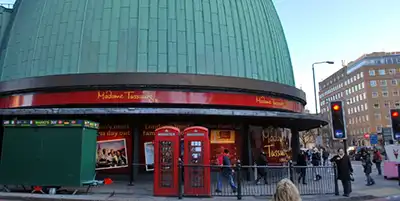
Founded by Marie Tussaud in the early 19th century, the museum began as a collection of wax masks of famous people. Today, it has become a global attraction with branches in several major cities.
- Wax statues . Renowned for their striking resemblance to the personalities they represent. From movie stars to political leaders to sporting icons, you’ll find an impressive variety of figures to admire.
Attraction highlights
- Thematic areas. Explore different themed areas in the museum, such as Cinema, Music, Politics, History and more.
- Interactive experiences. In addition to statues, Madame Tussauds offers interactive experiences where you can play alongside your favorite star, take selfies, and even participate in movie simulations.
- Special exhibitions. The museum regularly hosts temporary exhibitions featuring new wax statues and special events related to current cultural trends.
Useful information
- Access . Madame Tussauds is easily accessible by tube via Baker Street station (Bakerloo, Circle, Hammersmith & City, Jubilee, and Metropolitan Lines). Several bus lines also serve the area.
Entrance ticket to Madame Tussauds.
Harry Potter in London
London travel guide

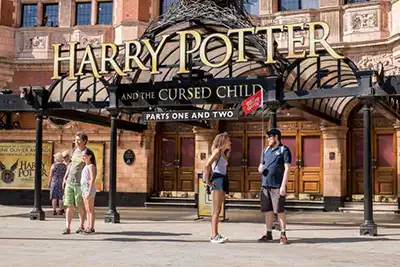

The Harry Potter Studio, located in Leavesden, about thirty kilometers from London, was born from JK Rowling’s global saga. It offers fans of the series a unique immersion in the magical universe of Harry Potter.
- Opening. Opened in 2012, the studio offers an interactive tour of the sets, costumes and props used in the films. This is a perfect opportunity for fans to go behind the scenes of this legendary saga.
Tour Highlights
- Leavesden Studios. The visit begins with a welcome film and an introduction to the creation of films. You will then explore iconic settings such as the Hogwarts entrance hall, the Gryffindor common room, and Dumbledore’s office.
- Accessories and costumes. Discover authentic costumes, magical props and special effects that brought the characters to life. You’ll see items like wizard’s wands, Nimbus 2000 brooms, and even Quidditch costumes.
- Thematic exhibitions. Explore special exhibits on visual effects, magical creatures, and special effects creation. Don’t miss the passage on the Hogwarts Express and the settings of the Forbidden Forest.
Useful information
- Access. The Harry Potter Studio is easily accessible by train from London. You can take a train from London Euston station to Watford Junction and then a direct bus to the studios. It is also possible to book an organized tour from London.
- Schedules and reservations . It is strongly recommended to book your tickets in advance , as the Harry Potter Studio is extremely popular.
Why visit the Harry Potter studio?
- Magical immersion. Immerse yourself in the magical world of Harry Potter by exploring the sets, discovering production secrets, and exploring the details of the films that have captivated millions of viewers.
- Family experience. Whether you’re a long-time fan or new to the world of Harry Potter, the studio offers a captivating experience for all ages. This is a great activity for families, groups of friends and even couples.
- Proximity to attractions. After your visit, take the opportunity to explore the surrounding area, including Watford with its shops and restaurants, or return to London to discover other iconic attractions in the city.
British museum
London travel guide


The British Museum was established through the donation of a private collection from Sir Hans Sloane, which included art and antiquities. It became a public museum in 1759 and has since added to its collection significantly.
Tour Highlights
- The big courtyard. Upon entering, you will be greeted by the museum’s magnificent Great Court, an impressive space that connects several galleries and offers spectacular views of the interior architecture.
- Egyptian room. Explore the famous Egyptian collection, including mummies, sarcophagi and funerary objects that bear witness to the wealth of ancient Egyptian civilization.
- Greek and Roman sculptures. Admire classical sculptures of deities, heroes and mythological figures, which represent the art and culture of ancient Greece and the Roman Empire.
Useful information
- Accès. Le British Museum est facilement accessible en métro via les stations Russell Square (Piccadilly Line), Tottenham Court Road (Central and Northern Lines) et Holborn (Central and Piccadilly Lines).
- Schedules. The museum is open every day of the week, with extended hours on certain days. Admission is free, although fees may apply for some temporary exhibitions.

What to do in London
London travel guide – The best activities 💞

Where to stay in London?
The best areas to sleep
London, United Kingdom, is full of picturesque neighborhoods and historic places to explore. Here is my selection of the best neighborhoods.
Covent Garden: the Art and Entertainment District
Covent Garden is an ideal choice for lovers of art, theater and exquisite shopping. Nestled in the heart of London, it offers easy access to West End shows, artisan markets, and renowned restaurants. Discover the magic of the Royal Opera House and stroll the cobbled streets of Neal’s Yard.
Soho: the vibrant nightlife district
For night owls, Soho is a must-see destination. It is full of bars, clubs and restaurants. By day, explore independent boutiques and enjoy trendy cafes. The area is also close to major attractions, such as Chinatown and Leicester Square.
South Kensington: cultural elegance
South Kensington is the perfect choice for culture lovers. You’ll be within walking distance of world-famous museums such as the Natural History Museum and the Victoria and Albert Museum. Tranquil gardens and upscale boutiques complement the sophisticated ambiance.
Notting Hill: bohemian charm
Notting Hill seduces with its bohemian charm, its colorful houses and its Portobello Road market. It’s an eclectic neighborhood with a laid-back atmosphere, ideal for lovers of antiques, international cuisine and street art.
Shoreditch: the trendy district of east London
Shoreditch embodies the creativity and modernity of East London. You’ll find art galleries, trendy bars, and an impressive street art scene. The neighborhood is also renowned for its vintage markets and innovative restaurants.
Canary wharf: the business and modern district
If you prefer contemporary accommodation, Canary Wharf is the place to be. It is London’s business district, offering iconic skyscrapers, stylish shopping centers and stunning views of the River Thames. Public transport easily connects you to the rest of the city.
Each of these neighborhoods offers a unique experience in London, whether for culture, nightlife, history, or modernity.

Getting around in London?
London, a vast and dynamic city, offers a variety of transportation options for visitors. To help you explore the British capital, here’s a practical guide on getting around in London.
Buses and underground in London
London boasts an excellent network of buses and the Underground, in addition to trains and river shuttles. If you plan to use the bus or Underground, it’s highly recommended to purchase an Oyster Card. Individual metro tickets in London can be costly for a single point-to-point journey. The Oyster Card, a rechargeable transport card, will allow you to benefit from reduced fares.
Planning your journeys
London sprawls across nearly 1,600 square kilometers, and navigating this sprawling city can be bewildering. Ensure you always have a city map with you or download the Citymapper app, a free and extremely useful resource for navigating London.
Tourist bus
An excellent option for tourists is the hop-on-hop-off tourist bus, allowing you to visit the city’s main attractions at your own pace. These buses offer multilingual commentary and are an excellent way to discover London.
Bike rental
If you’re a cycling enthusiast, London also offers a self-service bike rental system called Santander Cycles. It’s an eco-friendly option for exploring the city.
River shuttles
Don’t miss the chance to take a river shuttle on the Thames to enjoy a panoramic view of the city from the water. It’s a picturesque way to get around London.
Taxis and ride
Sharing Services London’s iconic black cabs are easy to spot on the city’s streets. Additionally, chauffeur-driven car services like Uber are also available for private trips.
London offers a variety of transportation options, allowing you to choose the one that best suits your needs and budget. Whatever mode of transportation you choose, be sure to plan your journeys in advance to make the most of your visit to London.

Visiting London – Practical information
Practical tips for your trip to London
| Information | Details |
|---|---|
| Official Language | English is the official language of London. |
| Currency | The British Pound (GBP) is the currency used in London. Euros are not accepted. Note that credit card fees outside the Eurozone can be high. |
| Cost of Living | London is a city with a high cost of living compared to other European capitals like Paris or Barcelona. |
| Passport and Visa | Following Brexit, a passport is mandatory for entry into the UK. An ID card is not sufficient. For stays of less than 3 months, a visa is generally not required. |
| Driving on the Left | In London, driving is on the left side of the road. If you plan to rent a car, take this into account. |
| Electricity | Electrical outlets in London are of type G, with a voltage of 230 V and a frequency of 50 Hz. You will need an adapter if your device uses a different type of plug. |
Practical Tips
| Information | Details |
|---|---|
| It is recommended to purchase travel insurance to cover potential medical issues, theft, or emergencies during your stay in London. | |
| Public Transportation | Get information about various public transportation options in London, including the underground, buses, and trains. Explore transportation card options, which can be cost-effective if you plan to travel frequently. |
| Safety | London is generally a safe city, but it’s important to remain vigilant, especially in crowded tourist areas, and ensure the safety of your personal belongings. |
| Cultural Tips | Familiarize yourself with local customs and social norms to avoid misunderstandings or inappropriate behavior during your stay. |
| Best Time to Visit | Include information about the ideal season to visit London based on the activities travelers plan to do. For example, summer may be perfect for outdoor festivals, while winter offers a festive atmosphere with Christmas markets. |
Visiting London during Christmas
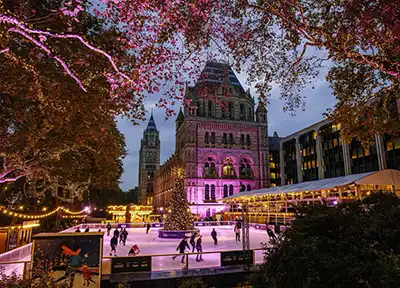


At Christmas, I find that London transforms itself, filled with magic and enchantment. If I hadn’t had the chance to go there several times, I would have chosen to visit London during Christmas.
You’ll be delighted by the store window decorations, the ice rinks (they set up during the holidays), I recommend the one set up at the base of the Tower of London, and the Christmas markets (amazing). Christmas in London is a true gift, just like spending Christmas in Dubai or Montreal, but it’s right on our doorstep and it costs much less.
Would you like to discover your next cruise stopovers?
In North America

Visit New York

Cruise stopovers in the Mediterranean
Detailed stopovers port by port

Around the world

In the Caribbean

In the Fjords

Cruise guide

My Tatane Tour wishes you a wonderful stay in London.


